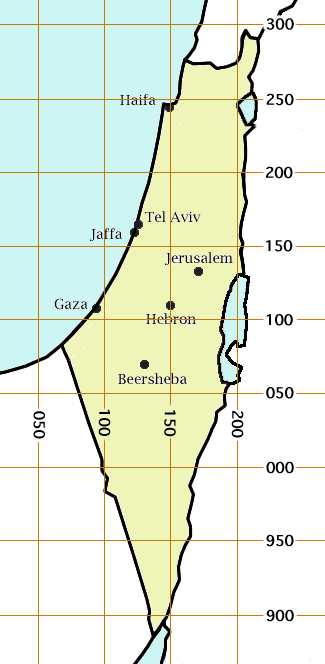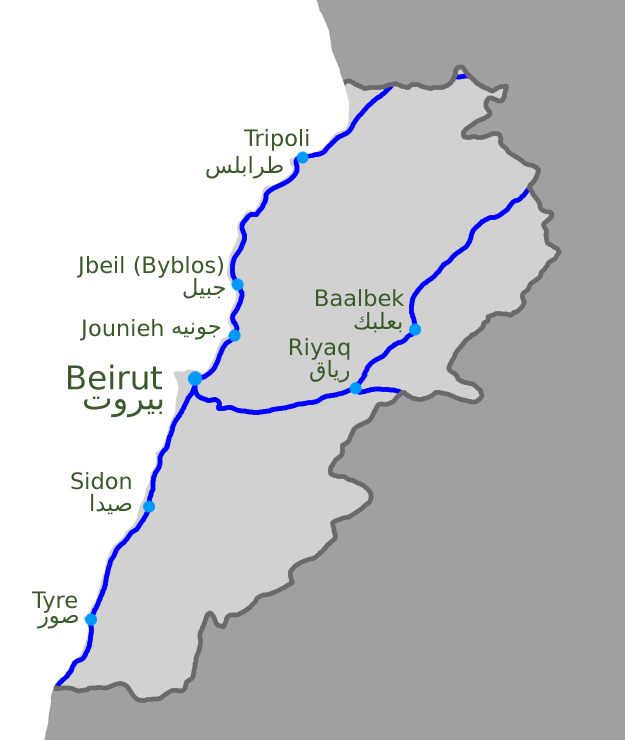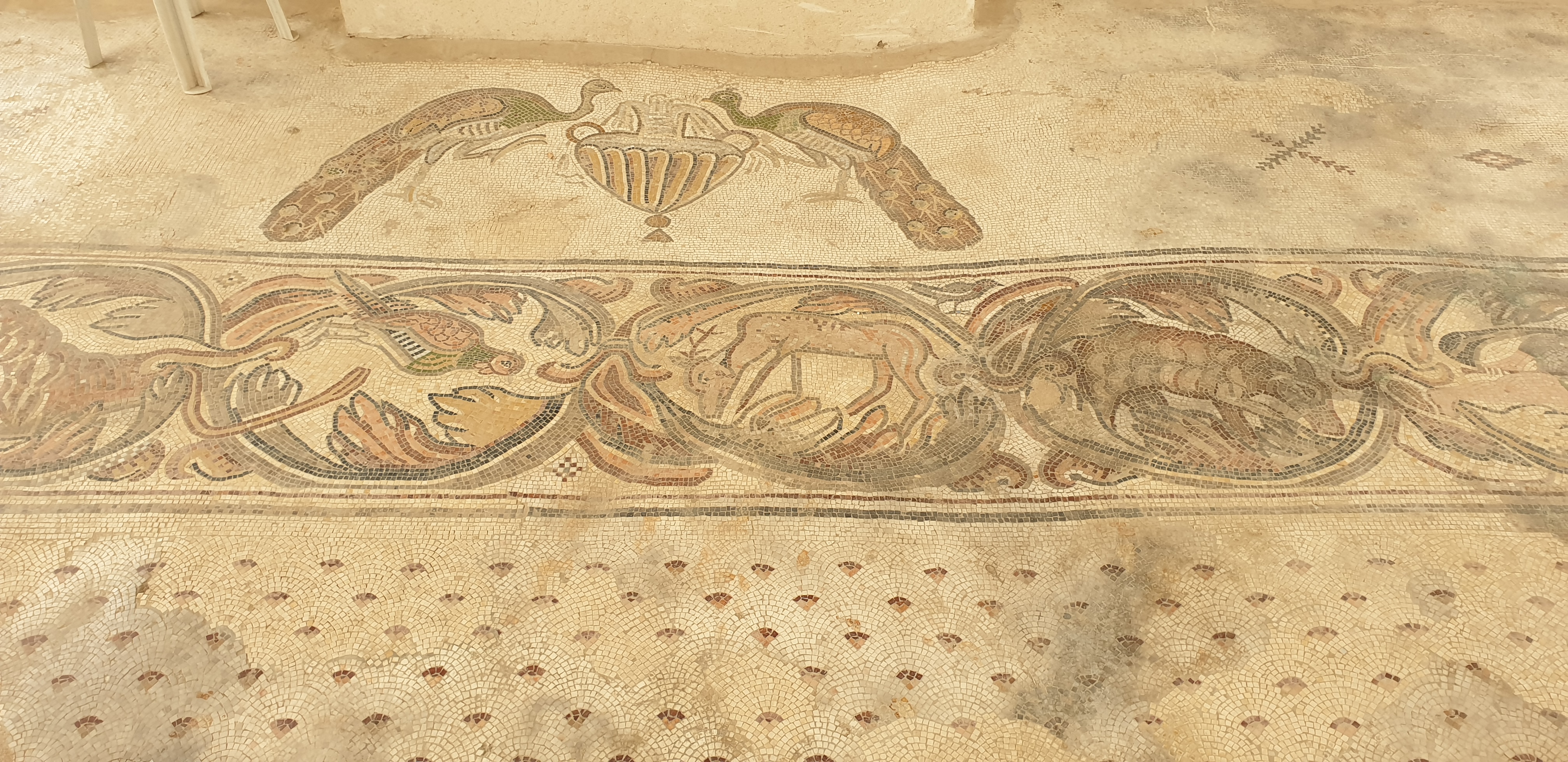|
An-Naqoura
An-Naqoura (, ''Enn Nâqoura, Naqoura, An Nāqūrah'') is a municipality in southern Lebanon. Since March 23, 1978, the United Nations Interim Force in Lebanon (UNIFIL) has been headquartered in An-Naqoura. Etymology According to E. H. Palmer (1881), the name means "the horn" or "the trumpet". This name rises from a misconception on the part of the Arab-speaking inhabitants, as the name, .Tyre means in Arabic a horn or trumpet; therefore ''Ras Sur'' (the headland or ladder of Tyre') is rendered by ''Nakura,'' the synonym for Sur. The word is also connected with .to peck or perforate." History In 1875, during the late Ottoman era, Victor Guérin described it: "The village stands upon a hill, on the south of which is a deep way, through which flows a spring called 'Ain Nakurah, which waters plantations of fig-trees and olives mixed with palms. The village contains 400 Metawileh. The houses are modern, but some of the materials appear ancient by their regularity and dimensions. ... [...More Info...] [...Related Items...] OR: [Wikipedia] [Google] [Baidu] |
Tyre District
The Tyre District is a district in the South Governorate of Lebanon. Municipalities The following 72 municipalities are all located in the Tyre District: * Al-Aabbassiyah * Aaitit * Aalma ash-Shaab * Ain Abu Aabdallah * Ain az-Zarqa * Ain Baal * Arzoun * Baflay * Barish * Al-Basatin * Batoulay * Al-Bayyad * Al-Bazouriyah * Bedias * Bestiyat * Al-Burghuliyah * Burj ash-Shamali * Burj Rahal * Al-Buss * Al-Bustan * Debaal * Deir Aames * Deir Kifa * Deir Qanoun an-Naher * Deir Qanoun Ras al-Ain * Derdghaya * Ad-Duhairah * Al-Halloussiyah * Al-Hamairi * Hannaouiyah * Al-Hanniye * Jannata * Jebal al-Bottom * Al-Jibbain * Jwaya * Al-Knaissah * Maarakah * Maaroub * Mahrouna * Al-Majadel * Majdal Zoun * Malikiyat as-Sahel * Al-Mansouri * Marwahin * Mazraat Meshref * An-Naffakhiyah * An-Naqoura * Qana * Al-Qlailah * Ar-Ramadiyah * Ar-Rashidiyah * Reshknanay * As-Sammaaiyah * Seddiqin * Selaa * Ash-Shaaitiyah * Shabriha * Shamaa * ... [...More Info...] [...Related Items...] OR: [Wikipedia] [Google] [Baidu] |
Palestine Grid
The Palestine grid was the geographic coordinate system used by the Survey Department of Palestine. The system was chosen by the Survey Department of the Government of Palestine in 1922. The projection used was the Cassini projection, Cassini-Soldner projection. The central Meridian (geography), meridian (the line of longitude along which there is no local distortion) was chosen as that passing through a marker on the hill of Mar Elias Monastery south of Jerusalem. The false origin (zero point) of the grid was placed 100 km to the south and west of the Ali el-Muntar hill that overlooks Gaza City, Gaza city. The unit length for the grid was the kilometre; the British units were not even considered. At the time the grid was established, there was no intention of mapping the lower reaches of the Negev Desert, but this did not remain true. Those southern regions having a negative Easting and northing, northing coordinate then became a source of confusion, which was solved by ad ... [...More Info...] [...Related Items...] OR: [Wikipedia] [Google] [Baidu] |
Lebanese Railways
Rail transport in Lebanon began in the 1890s as French projects under the Ottoman Empire but largely ceased in the 1970s owing to the country's civil war. The last remaining routes ended for economic reasons in the 1990s. At its peak Lebanon had about of railway. History Ottoman Empire Beirut and Damascus were first connected by telegraph in 1861 and by a macadam road in 1863. Syrian railways connecting the two cities ( over the crest of the Mount Lebanon range) or another port were planned as early as 1871 but were not enacted. In 1889, the Ammiyya Revolt broke out among the Druze and other Syrian farmers. The Ottoman response to the insurrection included a number of railway concessions—quickly sold to foreign interests—to improve the development and centralized control of the region. Hasan Beyhum Efendi received a concession to construct a tramway between Beirut and Damascus in 1891. Beyhum sold the concession later that year to the French () or , which wa ... [...More Info...] [...Related Items...] OR: [Wikipedia] [Google] [Baidu] |
Nahariya
Nahariya () is the northernmost coastal city in Israel. As of , the city had a population of . The city was founded in 1935 by Jewish refugees fleeing Nazi Germany. Etymology Nahariya takes its name from the stream of Ga'aton River, Ga'aton (river is ''nahar'' in Hebrew), which bisects it. History Bronze Age The ruins of a 3,400-year-old Bronze Age citadel were found in the coastal city of Nahariya near the beach on Balfour Street, at a site known to archaeologists as ''Khirbet Kabarsa''. The citadel was an administrative center serving the mariners who sailed along the Mediterranean coast. There is evidence of commercial and cultural relations with Cyprus and the rest of the Mediterranean region. The fortress was destroyed four times by conflagration and rebuilt each time. Byzantine period A church from the Byzantium, Byzantine period, dedicated to St. Lazarus, was excavated in the 1970s. It was destroyed by fire, probably at the time of the Sasanian conquest and occupation o ... [...More Info...] [...Related Items...] OR: [Wikipedia] [Google] [Baidu] |
Swedish Armed Forces
The Swedish Armed Forces (, literally ''Defence Force'') are the Military, armed forces of the Kingdom of Sweden. It consists of four separate military branches, the Swedish Army, the Swedish Navy, the Swedish Air Force and the Home Guard (Sweden), Home Guard. Sweden's military has undergone a significant transformation in recent years, driven by a rapidly evolving security environment in Europe and its historic decision to join NATO in March 2024.2 This shift has led to substantial increases in defense spending, ambitious personnel expansion plans, and a renewed focus on territorial defense alongside continued international engagement. The Swedish Armed Forces have a long history, dating back to the sixteenth century, and have played an influential role in the history of Sweden. They reached their height in the seventeenth century, during the time of the Swedish Empire, when they participated in a variety of wars; these include the Scanian War, Northern War of 1655–1660, and ... [...More Info...] [...Related Items...] OR: [Wikipedia] [Google] [Baidu] |
Aftonbladet
(, lit. "The evening paper") is a Swedish language, Swedish daily tabloid newspaper published in Stockholm, Sweden. It is one of the largest daily newspapers in the Nordic countries. History and profile The newspaper was founded by Lars Johan Hierta in December 1830 under the name of during the modernization of Sweden. Often critical and oppositional, the paper was repeatedly banned from publishing. However, Hierta circumvented the bans by constantly reviving the paper under slightly modified names, as, legally speaking, a new publication. Thus, on 16 February 1835, he issued the first edition of New , which would – after yet another ban – be followed by Newer , in turn followed by Fourth , Fifth , and so on. In 1852 the paper began to use its current name, , after a total of 25 name changes. It currently describes itself as an "independent Social democracy, social-democratic newspaper." Augusta Barthelson often wrote small stories in the newspaper. The owners of ... [...More Info...] [...Related Items...] OR: [Wikipedia] [Google] [Baidu] |
Swedish Army
The Swedish Army () is the army, land force of the Swedish Armed Forces of the Kingdom of Sweden. Beginning with its service in 1521, the Swedish Army has been active for more than 500 years. History Svea Life Guards dates back to the year 1521, when the men of Dalarna chose 16 young able men as Royal guard, body guards for the insurgent nobleman Gustav Vasa in the Swedish War of Liberation, war against the Union of Kalmar, thus making the present-day Life Guards (Sweden), Life Guards List of oldest military units and formations in continuous operation, one of the world's oldest regiments still on active duty. In 1901, Sweden introduced conscription. The conscription system was abolished in 2010 but reinstated in 2017. Organisation The peace-time organisation of the Swedish Army is divided into a number of regiments for the different branches. The number of active regiments has been reduced since the end of the Cold War in the late 1980s. However the Swedish Army has begun ... [...More Info...] [...Related Items...] OR: [Wikipedia] [Google] [Baidu] |
Jim Muir
Jim Muir (born 3 June 1948) is a British journalist, currently serving as a Middle East correspondent for BBC News, based in Beirut, Lebanon. Education Muir is of Scottish heritage, but was born in Farnborough, Hampshire, in England in 1948, and was educated at Sedbergh School in Sedbergh, then in the West Riding of Yorkshire, before going on to study Oriental Studies (Arabic) at Sidney Sussex College, Cambridge, where he graduated with a first class honours degree in 1969.'Tripos results: Sciences, Archaeology, Geography', ''The Times'', 18 June 1969. Career Muir worked at Frank Cass & Co, a specialist international politics academic publishing company, in London between 1970 and 1974. He drove to Beirut after Christmas 1974, assuming Lebanon to be a safe haven in the turbulent Arab world. However, not long after arriving, a devastating 15-year civil war broke out. Muir was the Beirut correspondent for the Inter Press Service between 1975 and 1978, and then became a freelanc ... [...More Info...] [...Related Items...] OR: [Wikipedia] [Google] [Baidu] |
Dennis Walters
Sir Dennis Murray Walters (28 November 1928 – 1 October 2021) was a British Conservative Party politician who served as the Member of Parliament (MP) for Westbury from 1964 to 1992. Early life The son of Douglas L. Walters and Clara Walters (''née'' Pomello), Walters was of English and Italian descent and born in Italy. He was brought up as a Roman Catholic. At the outbreak of the Second World War he was in Italy and was interned, but after the Armistice of 1943 he was released and served for eleven months with the Italian Resistance. He then returned to England and was educated at Downside School and St Catharine's College, Cambridge, where he read Modern Languages as an Exhibitioner and completed an MA. Career In the late 1950s, Walters was employed as personal assistant to the Conservative peer Lord Hailsham throughout his chairmanship of the Conservative Party. At the 1959 general election, Walters contested Blyth for the Conservatives, fighting the seat again th ... [...More Info...] [...Related Items...] OR: [Wikipedia] [Google] [Baidu] |
Christopher Mayhew
Christopher Paget Mayhew, Baron Mayhew (12 June 1915 – 7 January 1997) was a British politician who was a Labour Member of Parliament (MP) from 1945 to 1950 and from 1951 to 1974, when he left the Labour Party to join the Liberals. In 1981 Mayhew received a life peerage and was raised to the House of Lords as Baron Mayhew. He is most known for his central role in founding the Information Research Department (IRD), a secret wing of the Foreign Office dedicated to Cold War propaganda. Early life Christopher Paget Mayhew was born in London, the son of Sir Basil Mayhew of Felthorpe Hall, Norwich. He attended Haileybury and Christ Church, Oxford, as an exhibitioner. In 1934 he holidayed in Moscow. While he was at Oxford, he became President of the Oxford Union. He was commissioned into the Intelligence Corps in 1940, rising to the rank of Major. Political career Mayhew was elected to Parliament for the constituency of South Norfolk in the general election of 1945. In 1945 ... [...More Info...] [...Related Items...] OR: [Wikipedia] [Google] [Baidu] |
Middle East International
''Middle East International'' was a bimonthly magazine published in London from 1971 until 2005, reaching a total of 761 issues. It was established by Christopher Mayhew and a group of senior British politicians and diplomats. The original publisher was Claud Morris, a newspaper magnate, who withdrew after a boycott by advertisers and an arson attack on his printing works. Mayhew was to remain the director until his death in 1997. It has been described as having been "one of the best-informed journals of current Middle East affairs". Its aim was to "provide intelligent, authoritative, and independent news and analysis on the Middle East". Origins In 1969 the Lebanese Ambassador to London, Nadim Dimechkie, invited recently retired Ambassador to Egypt, Harold Beeley, to a meal with Christopher Mayhew.Middle East International No 543, 7 February 1997; Harold Beeley p.3 In the discussion over how to present the Arab point of view in Britain, Mayhew put forward a proposal for the cre ... [...More Info...] [...Related Items...] OR: [Wikipedia] [Google] [Baidu] |
Jounieh
Jounieh (, or ''Juniya'', ) is a coastal city in Keserwan District, about north of Beirut, Lebanon. Since 2017, it has been the capital of Keserwan-Jbeil Governorate. Jounieh is known for its seaside resorts and bustling nightlife, as well as its old stone souk, ferry port, paragliding site and gondola lift (''le téléphérique''), which takes passengers up the mountain to the shrine of Our Lady of Lebanon in Harissa. Above Jounieh, and on the way to Harissa, a small hill named Bkerké (, or ''Bkerki''), overlooking the Jounieh bay, is the seat of the Patriarch of the Maronite Catholic Church of Lebanon. Residents of Jounieh and the surrounding towns are overwhelmingly Maronite Catholics. Maameltein is a district of Ghazir village. History The history of Jounieh goes back to the time of the Phoenicians. The town was an important trading center along the Lebanon coastline. In those days the port was an important one during winter, as it served as a safe spot for ships sai ... [...More Info...] [...Related Items...] OR: [Wikipedia] [Google] [Baidu] |





